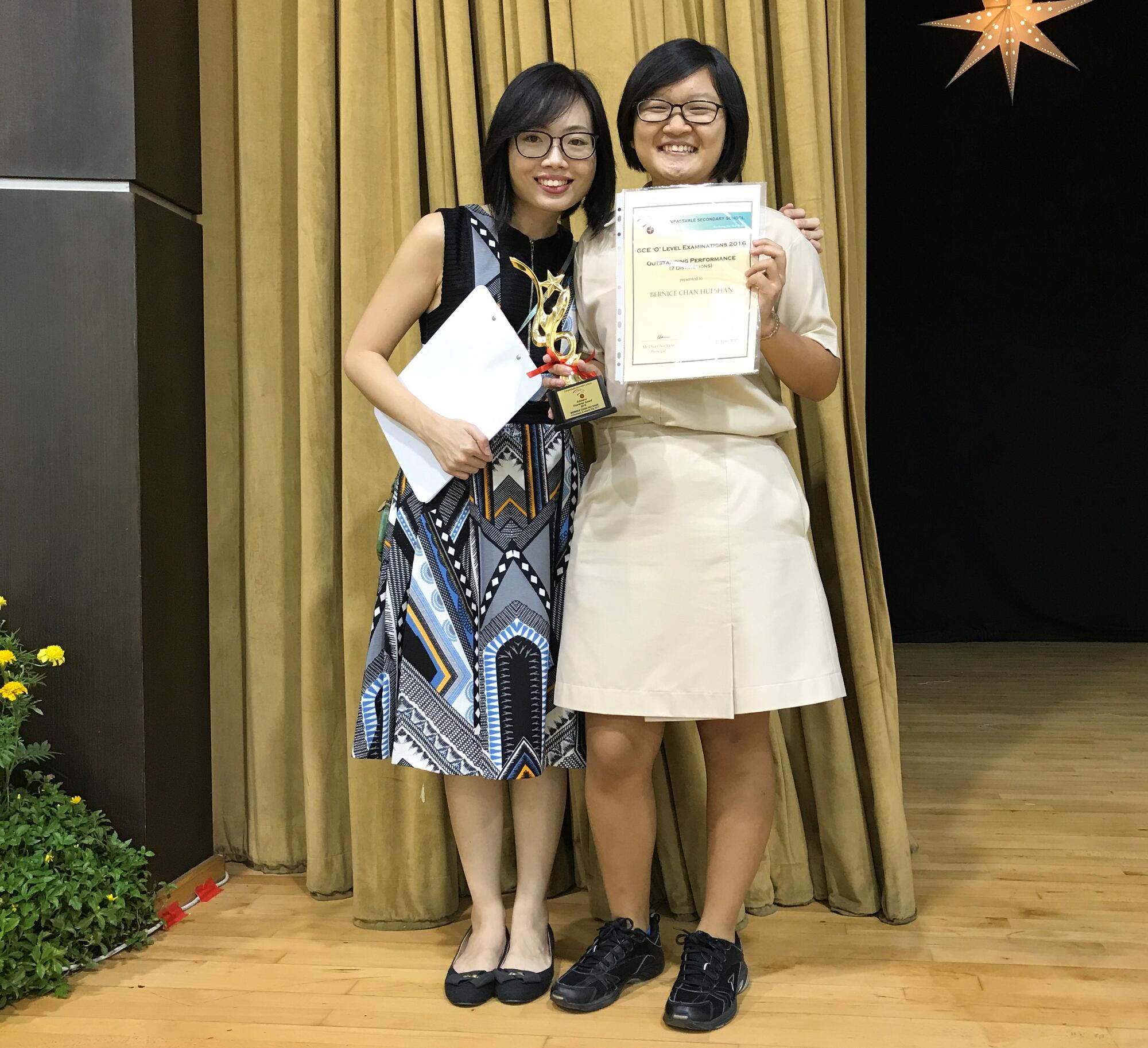Koh Bee Choo, Compassvale Secondary School, Outstanding Youth in Education Award 2020 finalist
For my first lesson with any class, I would always tell my students, “You can dislike the subject, but you cannot dislike me.”
Building positive relationships with my students helps to improve their progress, engagement in lessons and academic motivation. If we trust each other, it will lead to increased cooperation and engagement. Even students with disciplinary issues will slowly open up and rise to our expectations. After all, students work hardest for teachers they like and respect.
To do that, I had to be comfortable in my own skin — to be natural and sincere. I find opportunities to build positive relationships with my students, sharing with them personal stories during lessons, or spending time chitchatting with them after school. I try to remember every story or problem they have shared with me and fulfil any promises I have made.
Bernice Chan was from my form class. I recalled that she was a quiet but capable girl, so I encouraged her to be the subject representative in Secondary Two. That was the opportunity she needed to start building her confidence.
The role allowed her to pick up important skills like communicating with her peers and helping to keep everyone on task for Chinese Language class. It set her on the path to become the company leader of the Girl Guides.
After she graduated, she came back to school one day and told me, “Miss Koh, I want to become a teacher just like you.” No words can express how touched I was at that moment because I never imagined that I would have such an impact on my students.
What I thought was a simple act of looking out for my students and being supportive and approachable had inspired Bernice. She is currently working hard towards her goal of becoming a teacher.
Opportunities for Friendships
I also believe it is important for us to create opportunities for students to mingle with peers from different backgrounds. Some parents might express certain sentiments such as not wanting their child in the Express stream to mix with students in the Normal stream. However, students do not necessarily share these sentiments.
This is where the teacher is important. I select students from various streams to take part in projects so that we create opportunities for them to interact and bond with each other.
One example is of the “Masked Singers” segment, which we put up during our school’s Chinese New Year concert last year. The idea is based on a Chinese reality singing show, where celebrities perform songs while wearing masks to conceal their identities and keep everyone guessing. Bodyguards usher the celebrities on stage. For our school performance, the teachers were the secret singers, and I approached students from different streams to be the bodyguards for their respective teachers.
This event created avenues for students, who may not otherwise meet, to participate in activities together, and for teachers and students to interact as well. Friendships blossomed, memories were forged, the students had fun, and so did I. Through experiences like these, students discover the value of friendships with those who may be different from them.
Joy of Teaching Leads to Joy of Learning
To spur students’ interest in learning the language, I believe it is important to make lessons fun. For example, I designed analogue card games like Snakes and Ladders or Old Maid to teach vocabulary. There are elements of competition and surprise, which keeps learning interesting.
In my version of Snakes and Ladders, students need to complete a sentence with the correct vocabulary before they can roll a dive to move forward. However, winning the game still depends on how lucky you are when rolling the dice.
Students are used to playing computer games, so card games may now be more novel to them. For teachers, it is tapping the joy we experienced when we played these games growing up and bringing that joy to the classroom.
In addition, I take students to different parts of the school to learn how to describe the scenery when teaching descriptive essay-writing. By shifting the classroom to the school compound, it increases their level of engagement.
I take pride in differentiating lessons for my students and enjoy spending time creating innovative learning experiences for them. Seeing the smiles on their faces and the high energy level during lessons motivates me to explore more teaching pedagogies.
My goal is to make learning their Mother Tongue fun. Doing so will ensure students look forward to these lessons.
Teachers Learn and Grow Together with Students
Learning is an endless process. As teachers, we need to constantly keep learning, too, so that students learn better.
I often share strategies which I have used with my colleagues and invite them to observe my lessons. I also encourage teachers in my department to experiment with new strategies so that we continue to grow our craft. Some of our efforts include developing rubrics for argumentative writing, designing games application for the learning of vocabulary, which were shared with the fraternity at various platforms.
It is this virtuous cycle of trust, teaching and learning that help students grow. Ultimately, it is not the number of lessons you have taught that is important, but the number of hearts you have touched that matters most.






